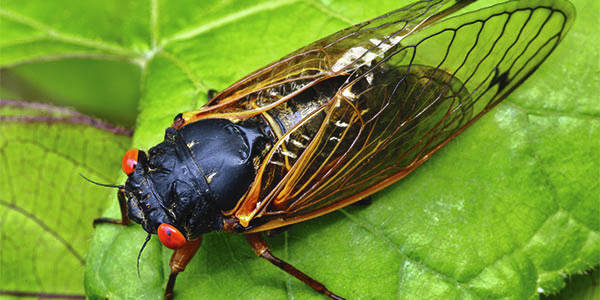Get ready — the invasion is about to start. And don’t say you haven’t been warned.
According to information from Fleming County Extension Agent April Wilhoit, in May and June, billions of 17-year periodical cicadas will emerge from the ground all across Kentucky.
According to Cicada Mania, the insects typically appear beginning in mid-May and ending in late June. These cicadas will begin to emerge approximately when the soil 8-inches beneath the ground reaches 64 degrees Fahrenheit. A nice, warm rain will often trigger an emergence. Back in 2004, people began reporting emergences around May, 13, according to the website.
Cicada Mania also noted cicadas will emerge after the trees have grown leaves, and around the same time iris flowers bloom.
But the insects aren’t a danger to people. They don’t bite or sting. Instead, they are more of an annoyance. They will mostly be a noisy irritation, said a University of Kentucky College of Agriculture, Food and Environment entomologist.
“Periodical cicadas are not a pest necessarily, especially of people,” said Jonathan Larson, UK extension entomologist. “They are not going to bite us. They are not going to attack us. They are not inherently toxic to pets. There can be some annoyance with the noise they produce, especially if you are standing right next to them. It’s like standing next to a jet airplane.”
The emerging cicadas this spring are part of Brood X, which is one of the largest groups of cicadas in the U.S. Brood X is also referred to as the Great Eastern Brood, one of 15 broods of periodical cicadas that appear regularly throughout the eastern United States. It has the greatest range and concentration of any of the 17-year cicadas.
While cicadas will be present throughout Kentucky and Ohio, counties along the Ohio River, state parks and forested areas are expected to see the biggest numbers, according to information from Wilhoit and Larson.
“Normally we see the annual cicadas, which are green and black, but the cicadas emerging this summer are a different species. They are black with red eyes and orange marks on their wings,” Larson said. “It will be a unique experience. The trees will be very loud this spring. People should get out and try to enjoy them while they are here.”
And while the annoying insects may not harm people, they do pose a danger to young trees and are residents who have young trees, especially newly transplanted ones that are potential hosts to the bugs, should prepare to protect their trees. Host trees include young oaks and fruit trees.
“Those can be damaged as the female cicadas lay their eggs in their branches,” Larson said. “Getting some netting with holes that are less than one-half-inch wide and wrapping it around the young trees for about six weeks while the insects are out will keep those females from laying their eggs on them.”
When the cicadas emerge from the ground as nymphs, they will molt and leave behind a brittle exoskeleton. After they lay eggs, and they will die off in several weeks, leaving a biodegradable crunchy carpet that will last for a little longer.






